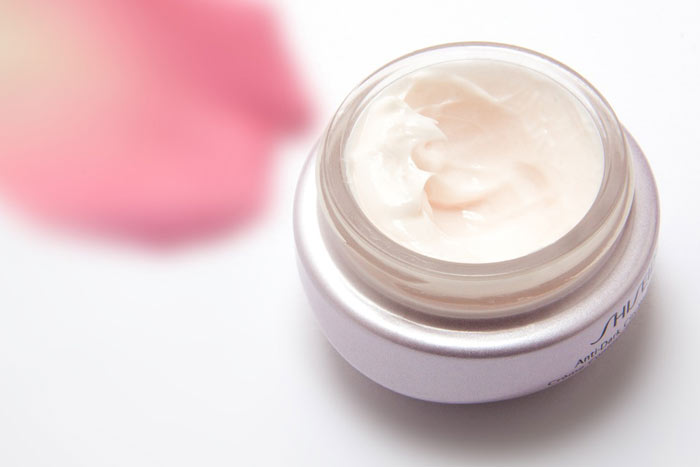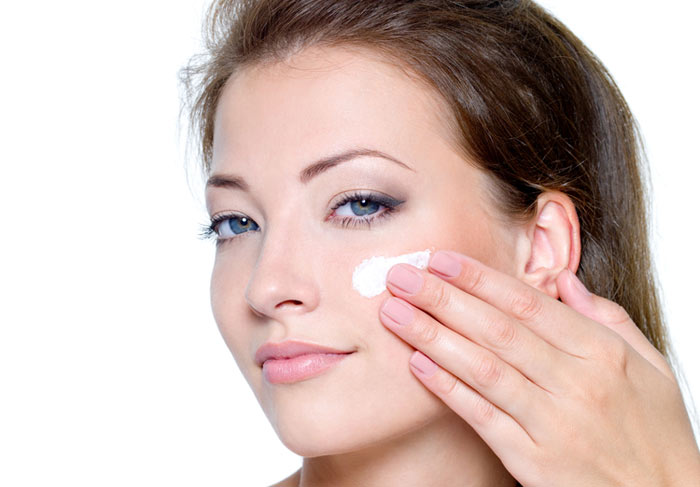The beauty industry is one of the most profitable in the world—and for good reason. People use cosmetics to stay clean, feel good, and look great. But to keep profits higher for businesses, they often have to skim on their ingredients to keep margins larger. The majority of consumers don’t realize just how dangerous skin and body products can be. And what you put on your skin is just as important as what you put on your body.

Unfortunately, many of the mainstream cosmetics brands we know and love are chock full of unhealthy minerals, and only a fraction of natural cosmetic brands comprise the beauty industry. “Women can put an average of 168 chemicals on their body through their skin care regimen every day, as showed by a study conducted by the Environmental Working Group” says Egyptian Magic, a maker of natural eczema cream. “The FDA doesn’t regulate chemicals in skin care, and it’s not possible to know what is truly safe or not.” Here are seven harmful skin care ingredients you should watch out for:
Oxybenzone
With summer just around the corner, you might be gearing up for your next beach destination. And one of the staples you’ll need is sunscreen. After all, sunscreen protects your skin from the harmful ultraviolet light emitted by the sun. But not all sunscreens are created equally. Many sunscreen products contain oxybenzone, a high-risk chemical that acts like estrogen in the body and has a negative impact on the reproductive system. Always check out the ingredients on your sunscreen. Unfortunately, some of the most household brands (Coppertone, Banana Boat, and Tropicana) all contain this very harmful ingredient. Look for products containing one of two safe minerals called zinc oxide and titanium dioxide.
Hydroquinone
Hydroquinone is a popular chemical found in skin lighteners. Because of the lack of skin lightening products, many choose to purchase them from overseas—however, the FDA warns that imported skin lightening products may even contain mercury. Hydroquinone can cause ochronosis, a skin disease that leaves blue and black discolorations on the skin.
Sodium Lauryl Sulfate
Sodium lauryl sulfate is a very common ingredient found in shampoos, face washes, and toothpaste. Studies have shown that this ingredient can cause canker sores, skin irritation, and can even disrupt the skin’s natural oil balance and contribute to acne. This ingredient is called a “surfactant” because it helps create a foaming material when used, and people associate that foam with cleansing.
Although assessments have found it safe to use in small doses (i.e., in applications where it’s rinsed off after a short period of time), it doesn’t account for prolonged use. Many consumers are using the same products for decades. The same ingredient is used in many household cleaning products. Search for shampoos and other products that advertise as being “sulfate free.”
BHA
Butylated hydroxyanisole (BHA) has been officially classified as a human carcinogen by the National Toxicology Program. A carcinogen is any substance that can cause cancer in living tissue. Several studies that tested the effects of BHA on animals found that it caused liver damage, stomach cancers, and can interfere with thyroid levels and the reproductive system. Yet, this ingredient is used in many perfumes and exfoliants. It’s also a preservative that you can find in foods like beer, chips, and cereals. To stay on the holistic side, Vitamin E oil is a safe and healthy alternative.
Parabens
Parabens are among the ingredients that are commonly associated with bad news. Unlike some of the other ingredients listed here, the FDA has officially acknowledged that parabens can be cancer-causing. Although they have yet to be directly linked to cancer, it’s clear that parabens can penetrate skin and live on the tissue. In a study conducted in 2004, there were traces of five kinds of parabens in the breast tissue of 19 out of 20 women.
Parabens have also been linked to a decrease in sperm count, and an increase in the risk of breast and skin cancer. They are commonly found in makeup, moisturizers, and spray tan products. However, identifying parabens in products isn’t exactly easy, because they aren’t labeled as “parabens,” but they do have “paraben” in the suffix—i.e, butylparaben, methylparaben and propylparaben.
Many products in health food stores advertise as being paraben-free. “Paraben is cheap to mass-market,” Tom Oliver, Nutritionist & Personal Trainer, told Elle Magazine. “But there are so many synthetic-free products on the market that are just as effective, I don’t see the need of using artificial ingredients which can cause irritation and stress, especially to sensitive skin types.’











